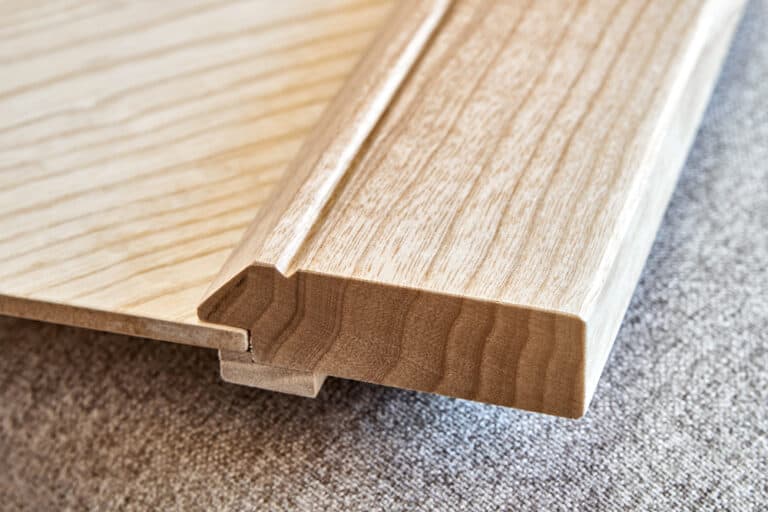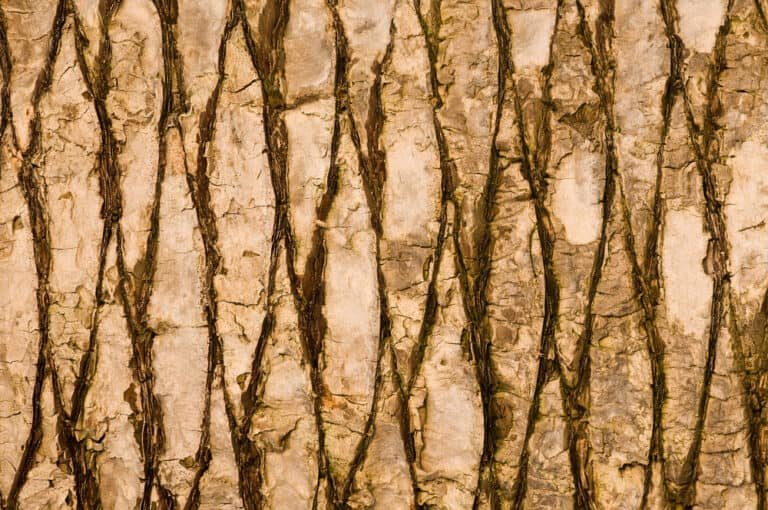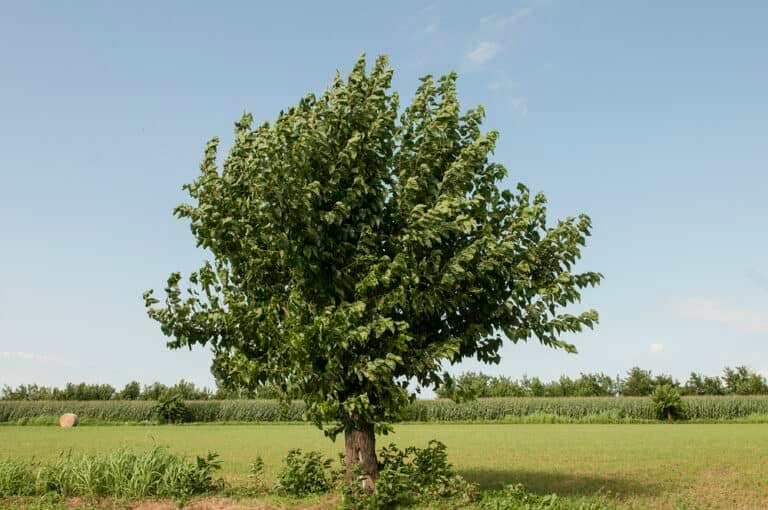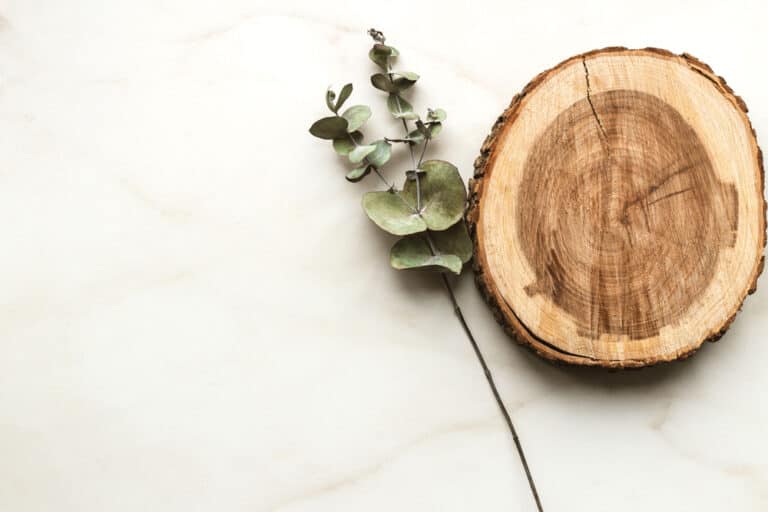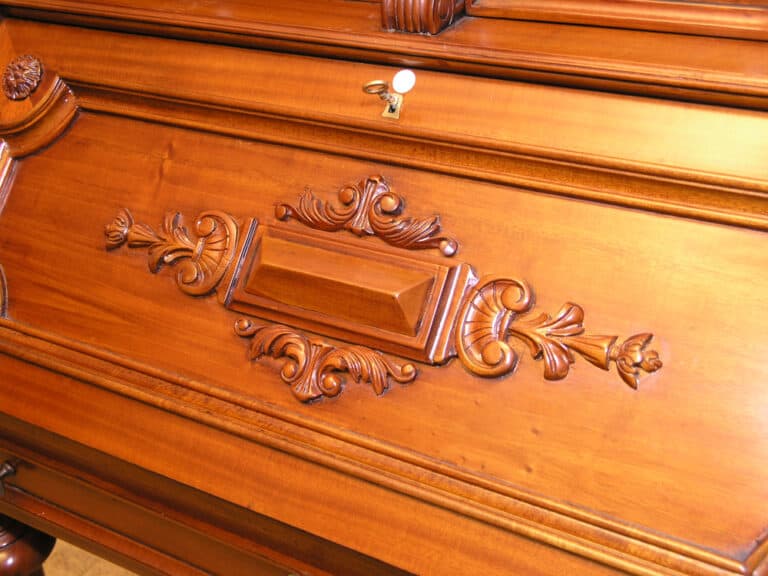Sycamore wood is a great choice for carving. It is a strong and lightweight hardwood, making it ideal for creating intricate designs. The grain of the wood has an attractive pattern and its color ranges from white to light brown with darker streaks.
Sycamore takes stain well, so you can customize your project’s look if desired. Additionally, it machines easily and holds detail well when carved or routed.
| Sycamore Pros | Sycamore Cons |
|---|---|
| Strength and Durability | Prone to Splintering and Chipping |
| Workability | Prone to Warping |
| Attractive Grain | Uneven Texture |
| Fine Texture | |
| Natural Beauty | |
The Best Types of Wood For Carving
Properties of Sycamore Wood
Grain and Texture
Sycamore wood is distinguished by its fine and interlocked grain, which can give rise to a range of patterns, including fiddle-back or flame figures. The texture is uniformly fine and has a natural sheen that can be enhanced with polishing. This interlocking can cause some issues with planing but is advantageous for ornamental carvings.
Color and Appearance
The heartwood of sycamore is typically a light to medium brown, sometimes with a reddish hue, while the sapwood can be pale to white. When quarter-sawn, sycamore displays a prominent ray fleck pattern, similar to the medullary rays seen in quartersawn oak.
Hardness and Workability
Sycamore is a hardwood, which implies a certain density and strength. However, it’s not as hard as other common carving woods like oak or maple, striking a balance between durability and ease of carving. Its workability is one of its most lauded properties, accommodating both hand tools and machinery easily, although the interlocked grain can sometimes lead to tear-out when machining.
Moisture Movement and Stability
Sycamore has moderate natural durability and is susceptible to movement in response to changes in humidity. It tends to expand and contract more than some other hardwoods, which can be a consideration for carvers when selecting and preparing wood for their projects.
Odor and Allergenic Properties
Generally, sycamore does not have a characteristic odor during cutting or carving, which is preferable for indoor work environments. It is also not commonly associated with allergic reactions, making it a safe option for most woodworkers.
Reaction to Finishes and Adhesives
Sycamore tends to take well to both finishes and adhesives, although its fine texture can sometimes absorb liquid finishes unevenly. Therefore, it may require a sanding sealer or careful grain filling to achieve a perfectly smooth finish.
Acoustic Properties
The wood is also appreciated for its acoustic properties, which makes it a good choice for musical instruments such as violins and guitars, where the wood’s ability to resonate enhances the instrument’s sound.
Sustainability
Sycamore trees grow relatively quickly and are abundant in certain regions, making the wood a sustainable choice for carvers who are environmentally conscious.
Is Sycamore Good for Carving?

Pros of Carving Sycamore Wood
- It’s a hardwood that is dense, yet lightweight, making it easy to work with.
- Sycamore has an attractive grain pattern which makes it great for decorative pieces or sculptures. It can be carved into intricate shapes without splintering or cracking, so it’s ideal for detailed projects like figurines or relief carvings.
- Sycamore is strong enough to hold up against wear and tear over time and resistant to rot and decay when exposed to the elements. This makes sycamore an excellent choice for outdoor projects such as garden furniture or birdhouses.
- Its natural beauty means you don’t need to use any finishes on your project if you don’t want too; sand down the surface until smooth and leave the piece in its natural state.
- The fine texture of sycamore allows you to achieve very precise cuts when carving, making this type of wood perfect for creating delicate designs such as filigree patterns or lace-like details on boxes and other objects.
- The evenness of the grain ensures that all parts of your design will look uniform once finished – no matter how complex they may be.
Key Takeaway: Sycamore is an excellent choice for wood carving due to its strength, durability, attractive grain pattern, and fine texture. It’s also relatively inexpensive and grows quickly, making it easy to find. Benefits include: strong & durable; attractive grain pattern; precise cuts; affordable; readily available.
Cons of Carving Sycamore Wood
- One of the biggest cons of using sycamore for carving is its tendency to splinter and chip easily. This can make it difficult to achieve clean lines and smooth surfaces when working on detailed carvings.
- Sycamore tends to warp over time as moisture levels change in the environment around it. This warping can cause problems such as misalignment between pieces or even cracking along seams where two pieces meet up against each other.
To prevent this from happening, you’ll need to use stabilizing techniques like gluing boards together before carving or sealing finished projects with a protective finish coat once they are complete.
- Sycamore can have an uneven texture across different sections of the same board. This can make sanding more difficult than usual since you may have areas that require more attention than others, depending on how much variation there is between sections of your piece.
Key Takeaway: Drawbacks include splintering easily, warping over time and an uneven texture. To prevent these issues, use stabilizing techniques like gluing boards together or sealing finished projects with a protective finish coat.
Best Projects for Sycamore Wood
Sycamore is also known for its excellent shock resistance, making it ideal for items that may be handled frequently or moved around often.
Small sculptures are one of the best projects for sycamore wood.
The material’s light weight makes it easy to carve intricate details into small figures without worrying about breakage or cracking due to excessive pressure from tools or hands.
Plus, the creamy white color gives sculptures a unique look that stands out from other materials like oak or mahogany.
Decorative items such as jewelry boxes and trinket dishes can also be easily made from sycamore wood.
These pieces require less detail than sculpture but still benefit from the strength and durability of this type of wood which allows them to withstand frequent use over time without breaking down quickly like softer woods might do when exposed to moisture or heat changes in temperature over time.
Furniture pieces such as chairs, tables, benches and even bed frames can all be crafted using sycamore lumber if desired since this type of hardwood holds up well under heavy loads without warping or splintering.
Key Takeaway: Sycamore can be used to make sculptures, decorative items such as jewelry boxes and trinket dishes, and furniture pieces like chairs, tables and bed frames.
Preparing Sycamore Wood for Carving
Selecting the Right Wood
When choosing sycamore wood for a carving project, look for pieces with even grain distribution and minimal knots or defects. If possible, select quartersawn wood to take advantage of the striking ray fleck pattern that is characteristic of sycamore. Pay attention to the color consistency if the project will not be painted or heavily stained.
Assessing Moisture Content
Before carving, ensure the wood has been properly seasoned or kiln-dried to the appropriate moisture content. Sycamore is prone to warping if the moisture content is not stable. Use a moisture meter to check the wood; typically, a moisture content of 6-8% is ideal for indoor projects.
Acclimatizing the Wood
It’s crucial to allow the sycamore to acclimatize to your workshop’s environment for several weeks. This step will help mitigate potential warping or cracking due to sudden changes in temperature or humidity.
Cutting to Size
Rough cut the pieces to a slightly larger size than the final project will require. This allows for any movement in the wood to occur before the detailed carving begins and provides some leeway for correcting any warping or cupping.
Surface Preparation
Begin with a planer or jointer to create flat, smooth surfaces, ensuring that the piece is true and square. For sycamore, sharp blades are essential to prevent tear-out due to its interlocked grain.
Stabilizing the Wood
For pieces that will be thin or intricate, consider using a stabilizing resin or a similar product to reinforce the wood. This process involves impregnating the wood with a resin and then hardening it, which can greatly increase the wood’s resistance to cracking and warping.
Sanding
Start sanding with a coarser grit to even out any discrepancies and gradually work your way to finer grits for a smooth finish. Be mindful of the uneven texture that sycamore can have and spend extra time on areas that may be more absorbent or rough.
Final Checks Before Carving
Inspect the prepared wood for any remaining defects or issues that could affect carving. Address these through further stabilization, filling, or sealing as needed.
